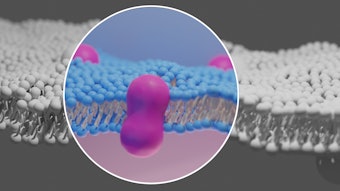
“It’s a bit like looking for a needle in a haystack,” says David Fisher, MD, PhD, chief of the Massachusetts General Hospital (MGH) Department of Dermatology and director of the MGH Cutaneous Biology Research Center, in reference to the collaboration agreement his department recently signed with SkinMedica (www.skinmedica.com). The research group will be evaluating tens of thousands of natural extracts. “We are actually seeking at least two agents: one that can safely and effectively lighten unwanted pigmentation and one that can safely darken light skin,” he says.
“There are lots of treatments for hyperpigmentation in the marketplace, but nothing that works terribly well,” says Rahul Mehta, PhD, vice president of research and development, SkinMedica, “and many are not backed by adequate clinical data. We see a need for products that work on the melanin pathways we now understand. Hydroquinone works well but has significant undesirable side effects. When it comes to skin darkening, we have no safe alternative.”
Why do we need a skin darkening agent? “Currently the only way to darken skin is by UV radiation, either from the sun or tanning beds—both of which are carcinogenic. In fact, UV radiation is the most common carcinogen and skin cancer is the most common cancer. The presence of pigmentation, however, is highly protective against skin cancer, and darkening light skin safely would be both medically and cosmetically desirable,” says Dr. Fisher, whose earlier work on chemically inducing pigmentation showed it to be both protective against ultraviolet-light-induced cutaneous DNA damage and tumorigenesis in laboratory mice (“Topical drug rescue strategy and skin protection based on the role of Mc1r in UV-induced tanning,” J.A. D’Orazio, et al, Nature, September 2006, pp. 340-344).
Image copyright istockphoto.com
[pagebreak]
How do you tackle testing tens of thousands of natural product extracts for two diverse effects? The key to this type of project, according to Dr. Fisher, is to:
• first, find a miniaturized platform for consistently producing melanin in skin cells;
• second, devise a systematic way to introduce test extracts in small amounts, which can then incubate for a given time;
• and, finally, use digitized microscopy to quantify the impact on pigment production.
“Initially, we will be looking for only three outcomes: no impact, significant up-regulation of melanin or significant down-regulation of melanin,” he adds.
Another issue is safety. “While pigment problems cause significant clinical symptoms, they are not usually life threatening,” notes Dr. Fisher. “When you are dealing with a substance to treat patients with deadly melanoma, some risk may be tolerated, but when you’re dealing with benign pigment problems, it is crucial that any treatment be not only effective but completely safe.”
Both Dr. Fisher and Mehta hope this collaboration will lead to a better understanding of the role of natural products in supporting or inhibiting the processes that generate pigment and, eventually, to the development of practical solutions for patients.
Linda W. Lewis is a contributing editor to MedEsthetics.











